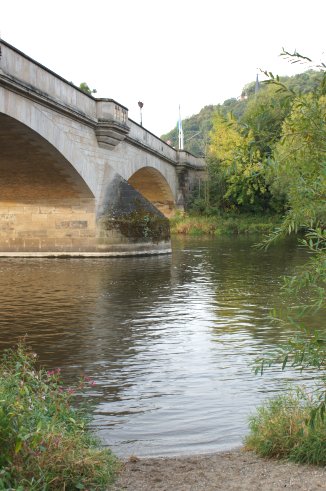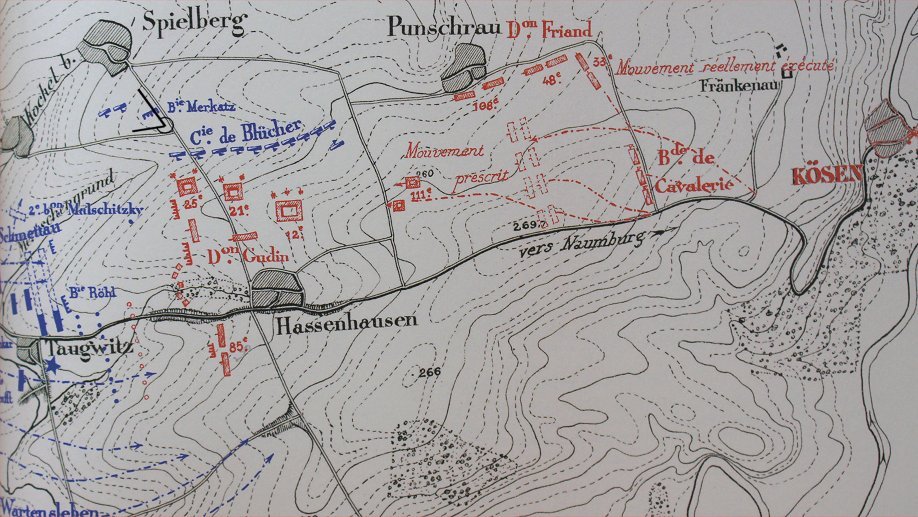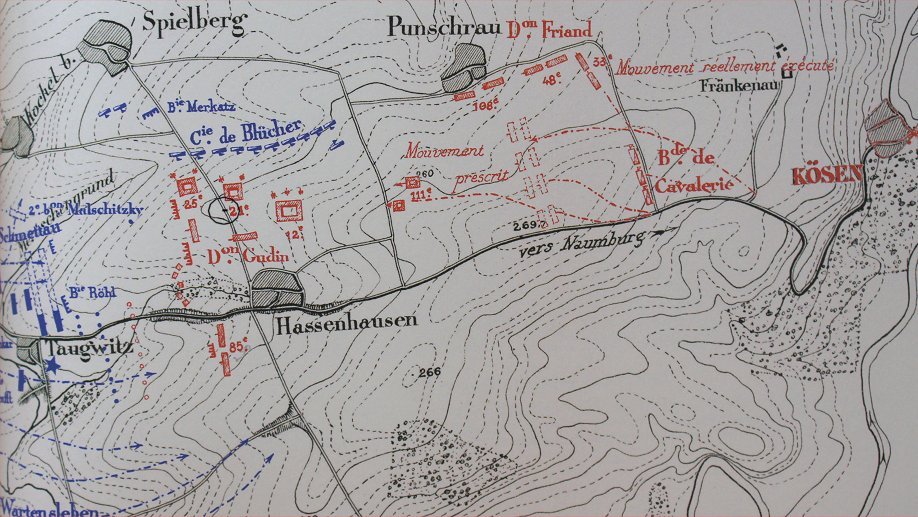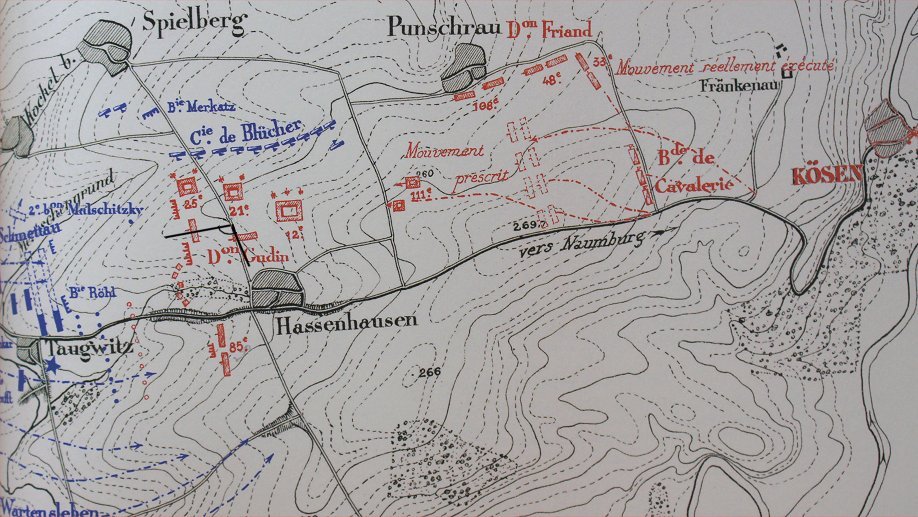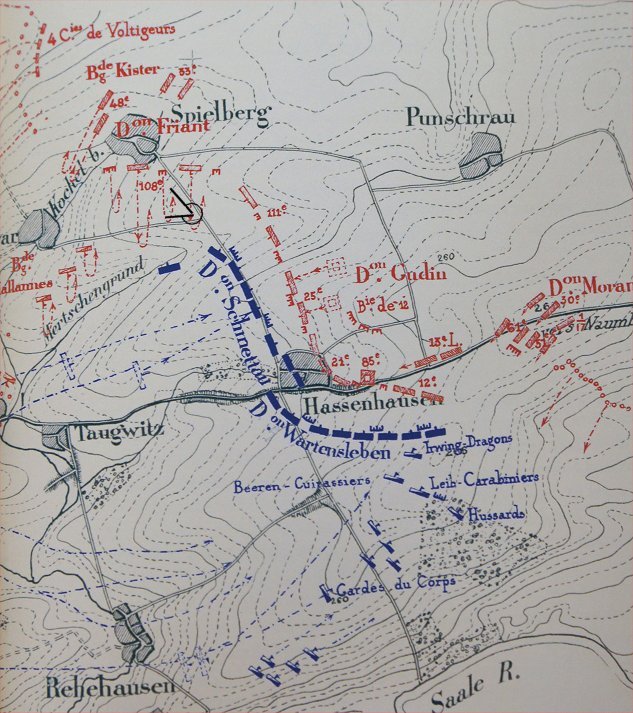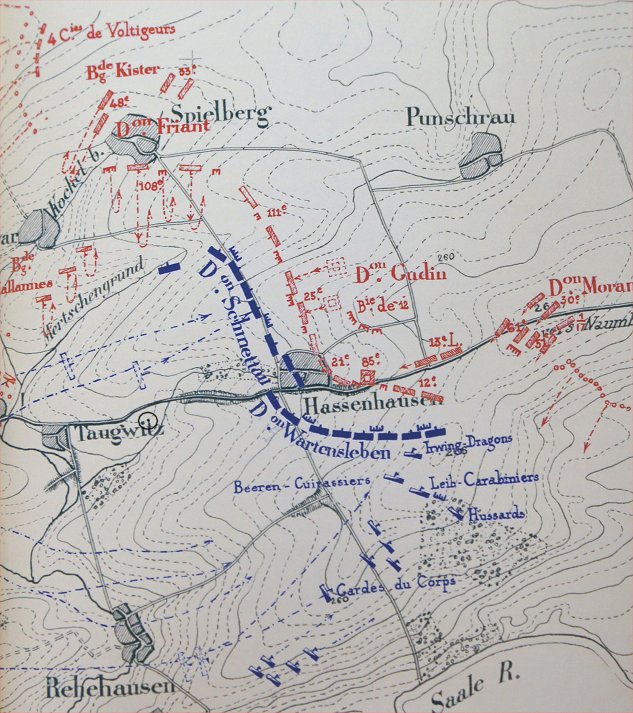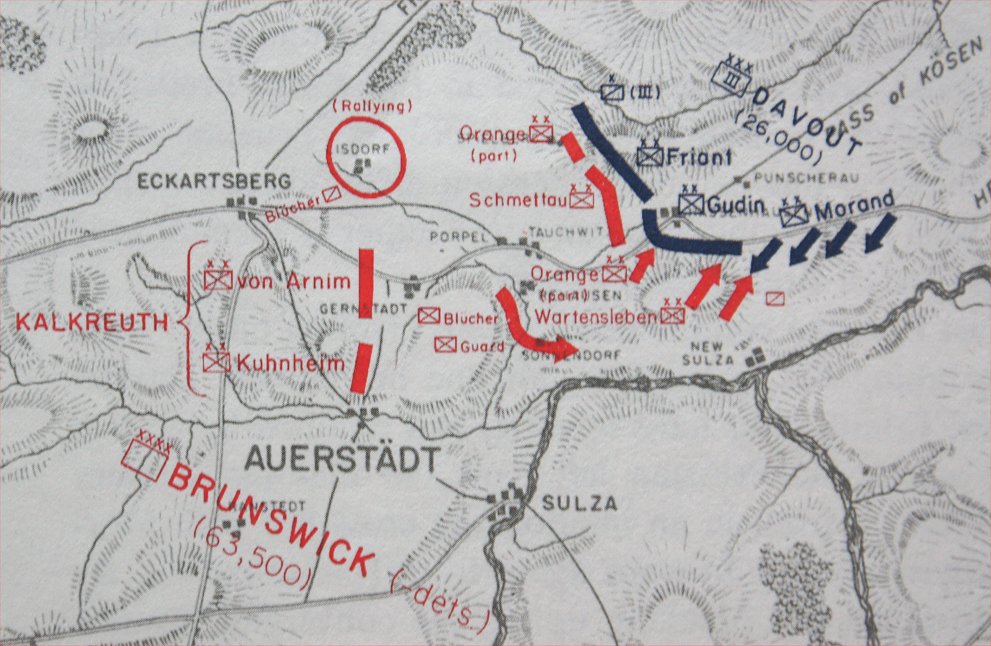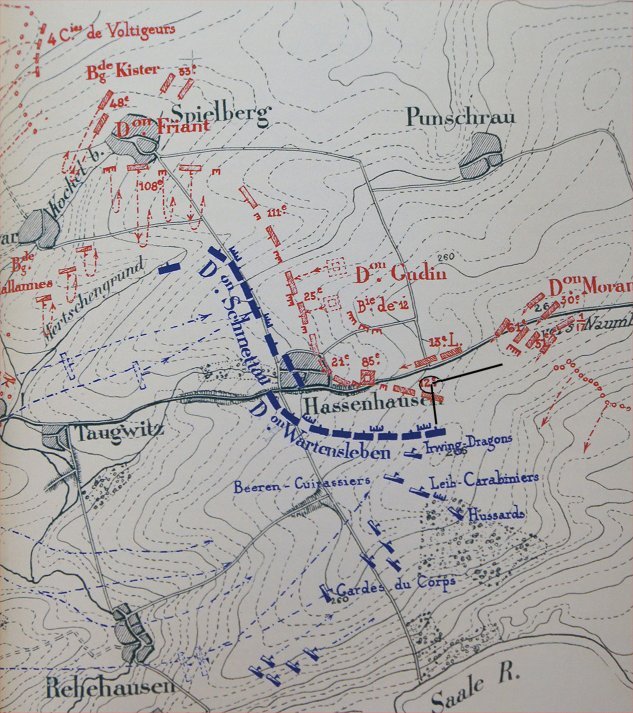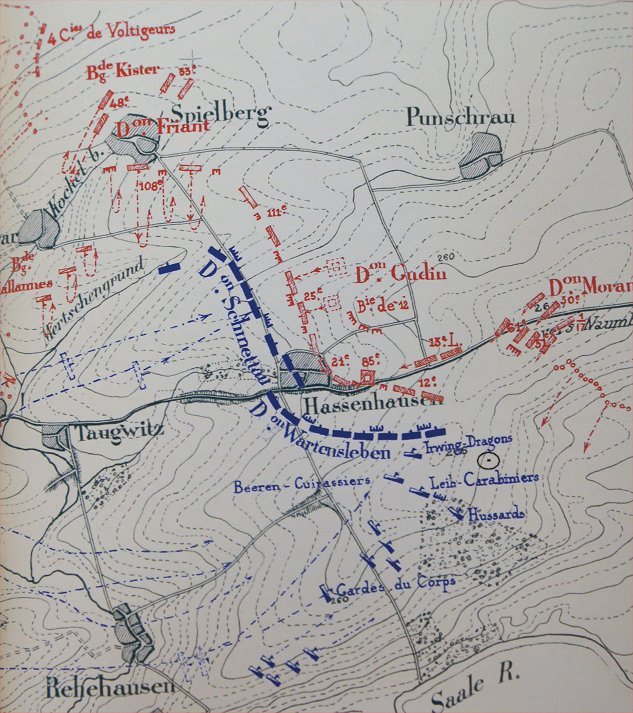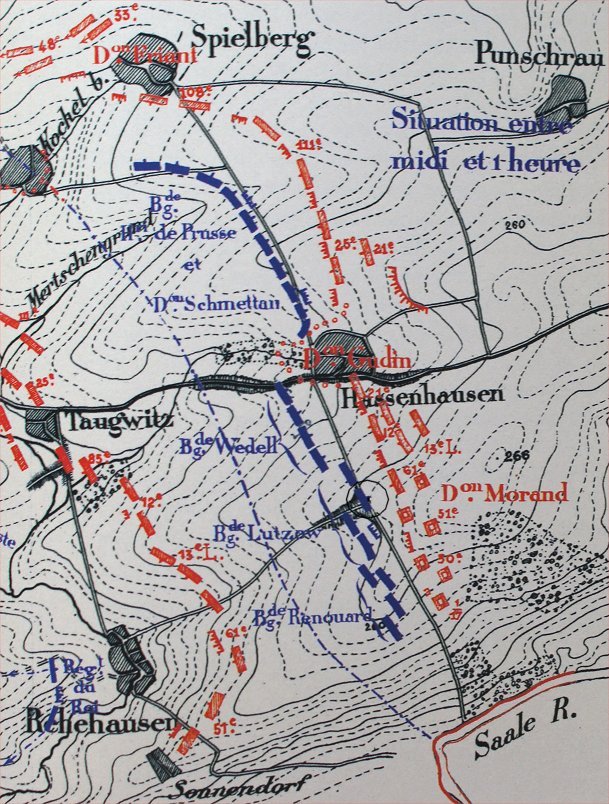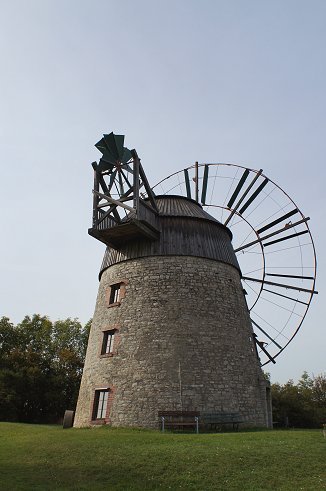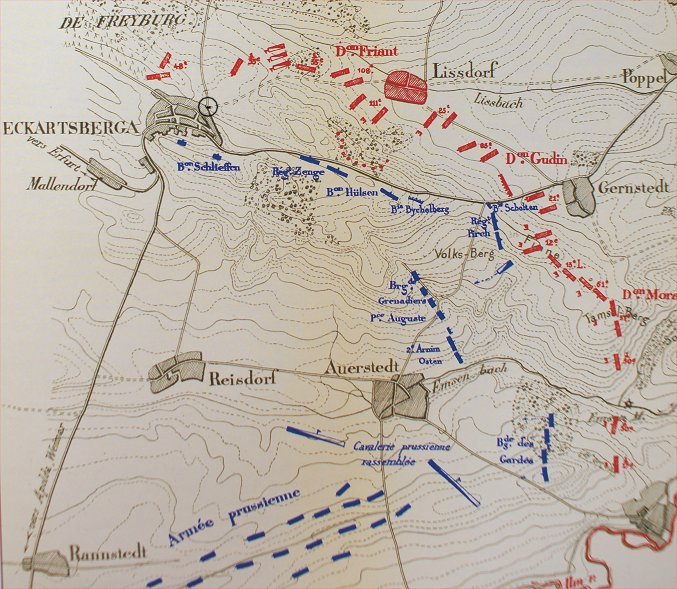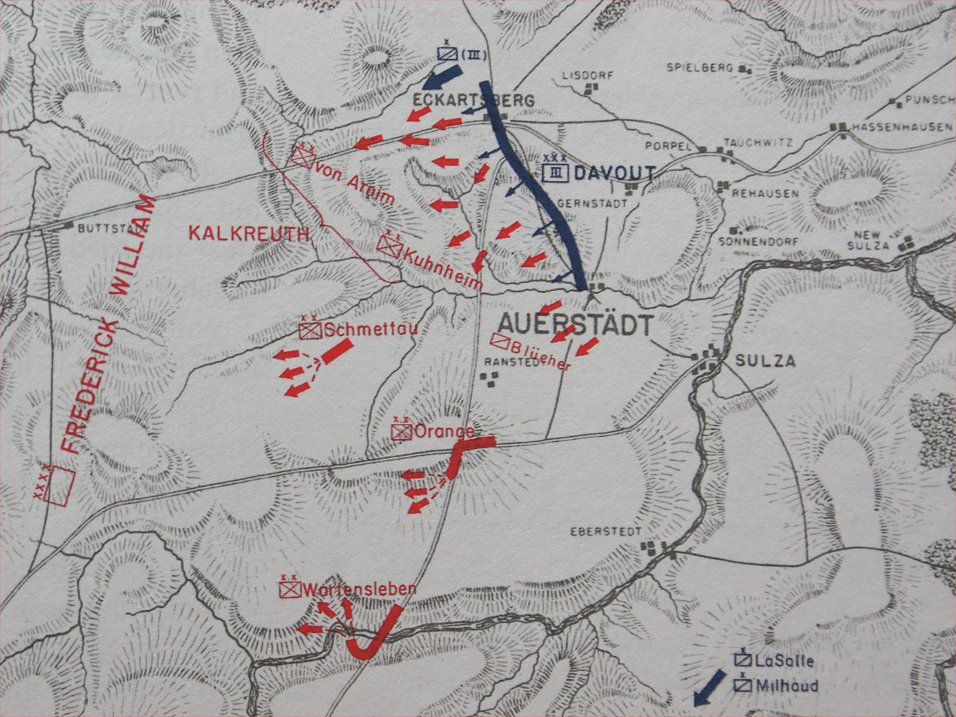To the east, Davout's 26,000 man III Corps was between Naumburg and Kosen, and on the morning of October 14th, they crossed the Saale and marched west, occupying Hassenhausen, arriving before the Prussians and cutting off the line of retreat of the Prussian army. In the battle that followed, although Bernadotte's 20,000 man I Corps was also near Naumburg, Bernadotte did not support Davout, instead marching south to join Napoleon, which he was unable to do in time to join the fight at Jena.
With 63,000 men, the Prussian commander, the Duke of Brunswick had more than enough men to not only reopen his line of retreat but also to destroy Davout's isolated corps. The Prussian army, however, did not understand the new operational level of warfare. Rather than move in formations of several all arms corps using several roads, Brunswick moved all his men over one road. Unable to maneuver around Davout, the Prussian army attacked him sequentially and was defeated in detail.
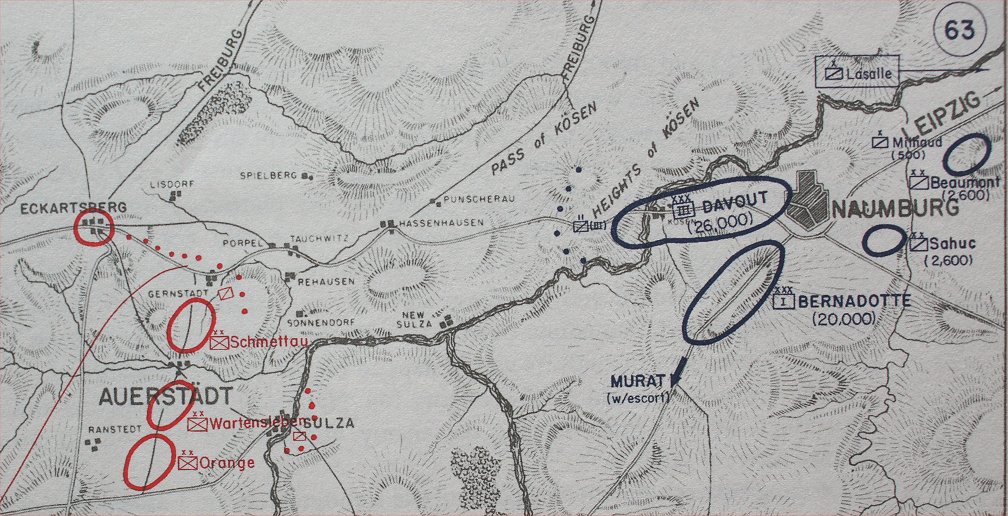
The more conceptual West Point maps used here depict the French in blue and the Prussians in red. Bressonet's maps with topographical features are the opposite color scheme.
